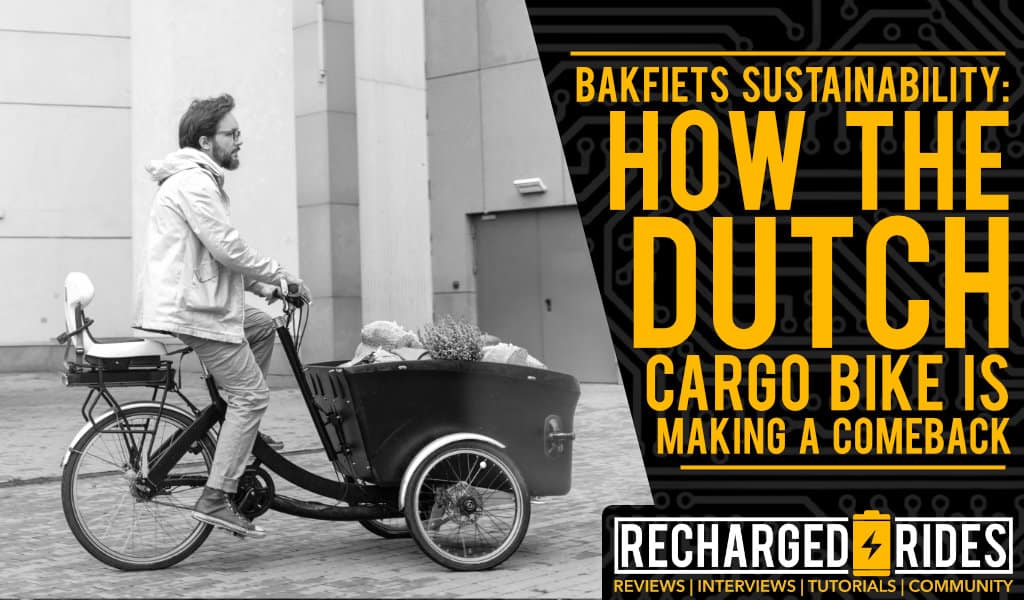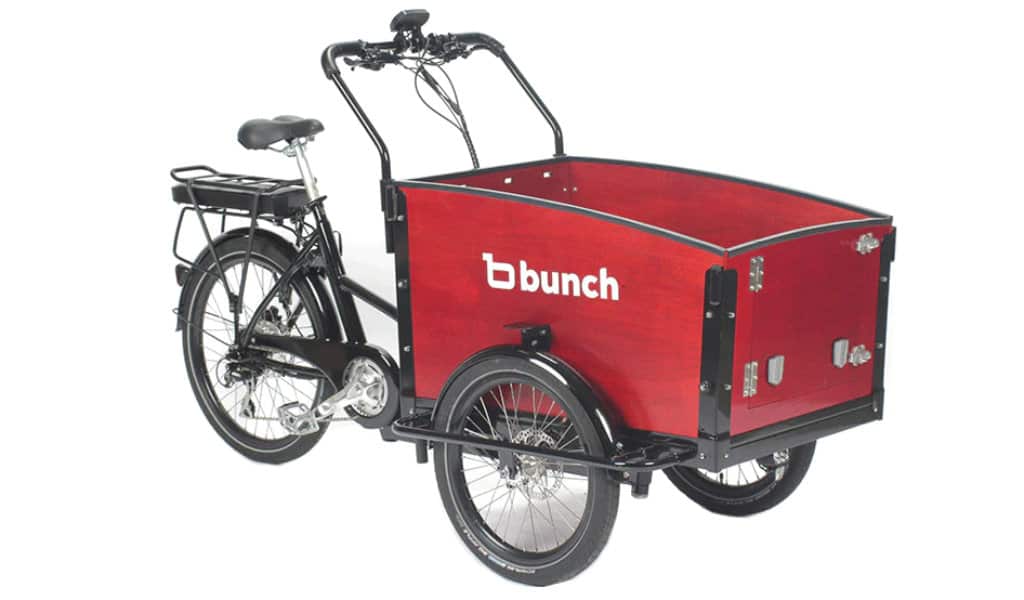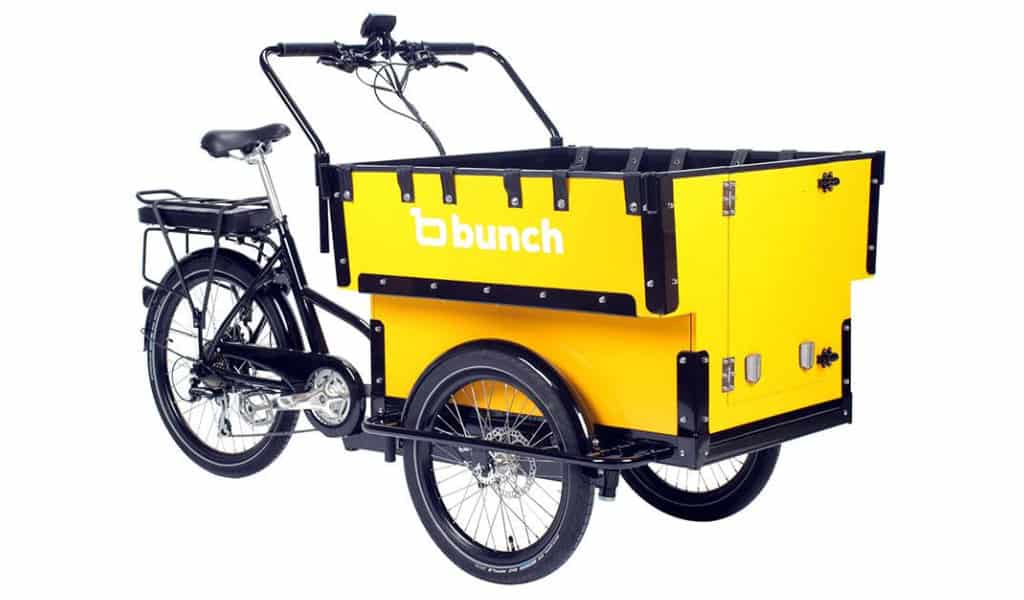
The bakfiets has been an integral part of Dutch culture and transportation for over a century. These unique bicycles have played a significant role in shaping the Dutch urban landscape and transportation system. The evolution of the bakfiets design, its historical significance, and its cultural impact will be analyzed throughout this article.
The origins of the bakfiets can be traced back to the late 19th century and its evolution has been shaped by events such as World War II and the car culture boom. The post-war era saw the bakfiets as a popular mode of transportation for families and as a symbol of Dutch heritage, efficiency, and environmental awareness. However, the bakfiets popularity declined in the latter part of the 20th century, but recently, interest in bakfiets bicycles has seen a resurgence due to environmental concerns and sustainability. This article will explore the historical background of the bakfiets and its ongoing significance in today’s society.
What is a Bakfiets Bike?
As someone who is deeply involved in the world of cycling, I have a great appreciation for traditional Dutch cargo bikes, commonly known as bakfietsen. Characterized by their long wheelbase and large cargo box or crate attached at the front, these bikes are designed to carry a variety of goods — from children and furniture to groceries and appliances. A typical bakfiets has two wheels at the front for stability and balance and one wheel at the back for easy maneuverability. The cargo box can be made of wood or metal/plastic, depending on the model, and may include additional features such as electric-assist motors, suspension, or integrated lighting. Some models also offer a child seat attachment at the back.
The design of bakfietsen has evolved over time; they now come in a range of styles including “Long John” shapes with sloping fronts and vertical backs. Models are available with two or three wheels, depending on your needs.
Bakfietsen are renowned for their stability, comfort, and efficiency, making them an ideal choice for urban transportation. Whether it’s carrying children, pets, or cargo over short distances or longer journeys, these eco-friendly bikes provide a reliable way to get around with no emissions — contributing towards a more sustainable lifestyle!
The Early History of Bakfietsen
The origins of the cargo bike concept can be traced back to the late 19th century when bicycles were first introduced in the Netherlands. Back then, they were designed to transport goods for small businesses, such as bakeries and grocers. However, these early cargo bikes weren’t as refined as the bakfiets we know today.
Over time, the design evolved during the 20th century until it took on its characteristic form with a large wooden box or crate attached at the front of the bike, and two wheels at the front for stability. These bikes were built by small manufacturers and craftsmen, and they primarily served commercial deliveries. Despite its usefulness, few additional features beyond the cargo box had been implemented yet into the overall design.
The bakfiets bike’s popularity skyrocketed during World War II due to its sturdy and reliable nature — making it an essential tool for delivering goods and supplies, as well as transporting families in times of fuel shortages and food rationing. This role played by bakfietsen during wartime helped to establish their popularity and cemented these useful bicycles as a practical means of transportation in Dutch society.
As peace was restored in the Netherlands at the end of WWII, so did the refinement of bakfiets designs, which resulted in more versatile models that are still being used today with great success.
Golden Age of the Bakfiets
From the post-war era onwards, bakfiets have been an integral part of Dutch life. As the economy improved and families grew, bakfiets provided a practical, efficient, and reliable means of transportation for families with multiple children. The increasing popularity of bakfiets soon brought about changes in urban planning and infrastructure, prompting cities to implement measures such as dedicated bike lanes and increased bike parking. This had a positive effect on the Dutch urban landscape, reducing traffic congestion and pollution while promoting healthier, more sustainable lifestyles.
As a result of its growing popularity, the bakfiets quickly became a symbol of Dutch heritage and sustainable living. Its convenience made biking practical as a mode of transportation throughout the Netherlands and helped establish it as one of the most bike-friendly countries in the world. Today, Amsterdam is often considered to be the bike capital of the world due to its extensive bike lane network.
Bakfiets bikes played an invaluable role in shaping Dutch culture during this time period. Not only did they provide an efficient way to transport kids and commercial goods — they also had an immense impact on urban planning and infrastructure. At the end of the day, this helped create a healthier and more sustainable environment for all citizens while solidifying biking as an essential part of day-to-day Dutch culture.
Decline and Resurgence of Bakfiets Bikes
From my perspective, the decline of bakfiets in the late 20th century can be attributed to a few factors. Primarily, motorized vehicles, such as cars and motorbikes, became increasingly popular and more affordable. This led to fewer people opting for cycling, including bakfiets riders, who found cars and other motorized vehicles more convenient. Additionally, improved public transportation infrastructure meant that people had more options available to them when getting around.
The perception that bakfietsen were no longer practical or necessary also contributed to their decline. Supermarkets and large retailers could offer a greater variety of goods than a single bike ride could carry. However, in recent years, environmental consciousness has been on the rise and this has given way to a resurgence of interest in the bakfiets as an eco-friendly mode of transportation. Electric assist bakfiets bicycles have been particularly popular because they can transport heavier loads over longer distances with less effort from the rider.
Modern bakfiets bikes have come a long way from the traditional “Long John” style of cargo bike; they come equipped with electric motors for assistance, suspension systems for comfort and stability, integrated lighting for safety and visibility at night, and metal or plastic cargo boxes (some even have child seats). The versatility of today’s designs makes them practical-yet-versatile solutions for business, families, and everyday life.
Overall, it is clear that the decline and resurgence of the bakfiets is indicative of larger changes in transportation trends and societal values throughout time. Today we are seeing how much people are embracing this eco-friendly mode of transportation as a practical means to get around town quickly and efficiently.
Electric Cargo Bikes: Taking Bakfietsen to the Next Level
As a proponent of electric cargo bikes, also known as e-cargo bikes, I’m here to tell you why they are quickly becoming the go-to option for many people. Electric cargo bikes are a modern take on the traditional Dutch bakfietsen and offer a range of benefits that make them an excellent choice for commuters, delivery businesses, and families alike.
The primary advantage of these bikes is their increased range and power, thanks to the addition of an electric motor and battery. This makes it possible to carry heavier loads over long distances or hills without fatigue. Additionally, they produce zero emissions, making them a clean and sustainable transportation option with minimal maintenance costs.
Furthermore, cargo e-bikes come equipped with various accessories such as child seats, racks, and pannier bags which can be used to customize the bike according to your needs. Whether it’s carrying groceries, children, or even your pups — electric cargo bikes can do it all!
The popularity of these bikes is growing rapidly around the world due to their practicality and sustainability. With their increased power, range, and low environmental impact — e-cargo bikes are taking bakfietsen to the next level and revolutionizing the way we commute.
Top-Rated Cargo E-Bikes
Final Thoughts
In conclusion, the bakfiets has had a great impact on Dutch culture and transportation for over a century. Originally used to transport goods by small businesses, the bakfiets later became an efficient mode of transportation for families during the post-war era. It also had a significant effect on urban planning and infrastructure in Dutch cities, helping to make biking a safe and sustainable choice.
Unfortunately, car culture and improvements in public transportation infrastructure led to a decline in the popularity of the bakfiets during the late 20th century. However, recently, interest in the bakfiets has been growing again due to environmental concerns. Modern models are equipped with powerful electric motors, suspension systems, and integrated lighting, making them even more versatile than before.
I believe that the bakfiets has played a major role in shaping Dutch culture and transportation. It is renowned for its practicality and efficiency as well as its sustainability which still inspires new generations today. The story of the bakfiets is one of resilience — it has endured despite ups and downs throughout history, proving itself an iconic form of transport that will remain timelessly relevant.



